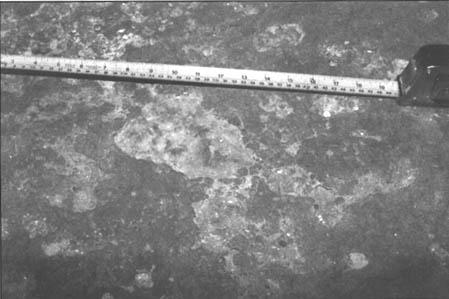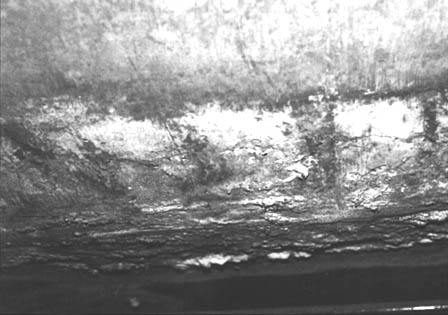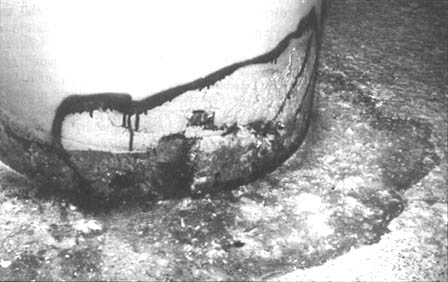 |
||
|
HOME | ABOUT US | SERVICES | PROJECTS | HEALTH & SAFETY | NEWS |
|
contact us request info links login blog AODA |
News & Articles |
|
The article below was written by one of CanMar's principals and was published in the Condominium Manager Magazine. It discusses the maintenance and prevention measures required in underground parking structures.
Structural deterioration occurs greatly to areas of the building envelope that are exposed directly or indirectly to the elements. Major areas of deterioration include masonry walls, balconies, the parking roof and suspended slabs. A major factor contributing to structural deterioration is the use of deicing chemicals on roads to control ice and snow. This salt (chloride) is carried into underground garages on the wheels and underbody of vehicles. The salt and the snow-laden water penetrate the concrete. The presence of chloride, in conjunction with moisture and oxygen, will eventually produce structural failure. Rusting reinforcing steel expands, creating stress within the concrete, which eventually leads to spalling (cracked loose pieces of concrete) over the reinforcing steel on the top surface or to the underside of the slab. Moisture penetration and subfreezing temperatures can cause freeze/thaw scaling (dusting and shallow spalling). Freeze/thaw scaling may create uneven and unsafe surface conditions that can result in liability risks and costly repairs. Cracks caused by stress and shrinkage create an avenue for water leakage, which may result in claims for damage to vehicle finishes. The primary defense against water and chloride penetration into the slab is a waterproofing system. Many waterproofing systems have a flexible membrane, which is designed to span cracks and have good elastomeric capabilities. This allows them to accommodate thermal movement. These systems come complete with a durable wear course, which protects the membrane from wear and damage. Expansion joints are another key structural element in a parking structure. It is these joints that allow the concrete slab to expand and contract with thermal movements while providing a watertight seal between the two slabs. If the expansion joint is failing, it will allow water to penetrate between the slabs and leak to the next level. This may create liability problems, as well as the intrusion of chlorides and moisture into the nosing of the expansion joints that may eventually lead to structural deterioration. Having a well-lit, clean and painted garage will not only make it easier to notice cracks, leaks and concrete deterioration, but it will also make the parking structure safer, and add to the value of the property. It is also important to ensure that all exhaust fans are working properly, as this will reduce the amount of humidity and moisture within the garage. Annual power washing of the garage floor surfaces in the spring will ensure that all chlorides and salt deposits are removed, so this it is unlikely they will all large amounts of standing water to penetrate the slab. All waterproofing and slabs should slope away from walls and columns and be directed to drains. Property managers should monitor leaks and cracks in the slab or wall, as well as concrete delaminations and must carry out the necessary repairs. Examining the waterproofing system for debonded or worn areas and making the necessary repairs will ensure that the concrete in not exposed. Keeping track of all this information will assist the restoration contractor or consulting engineer to assess the deterioration of the structure and finding a proper solution to these problems. When it is necessary to perform the work, you should consider a reputable restoration contractor. However, if deterioration of a structure is significant, a consulting engineer should also be contacted. When considering repairs to your parking structure, be aware that there will be a need to close parts of the garage, and maybe the entire garage, depending on the amount of work required. This, of course, will lead to some tenant parking constraints. Other factors should be considered, due to the nature of the repairs, such as noise and dust. Most restoration contractors are more than willing to provide quotations or budgets for restoration work. Should the cost to carry out the repairs exceed a predetermined budget, phasing the work over a period of two or three years may be an option. Condominium corporations and property mangers who tend to ignore problems in parking structures, such as deterioration and leaking, will eventually face unnecessary, costly expenses. Parking structures should be treated as an investment. By getting work done inexpensively you will not always end up with the protection for the structure. Look for long term effectiveness and durability. 
Water drips in a slab ceiling confirm the need to repair an expansion joint. 
With freeze/thaw scaling, water penetrates the surface of a concrete slab. Subzero temperatures cause the water to freeze and expand causing shallow spalling. 
As water drips through the underside of a concrete slab, there is evidence of rusting in the reinforcing steel. 
Deterioration of a column base, due to ponding, is very evident. 
<< back to News |
© copyright 2007 Can Mar Contracting Ltd. |